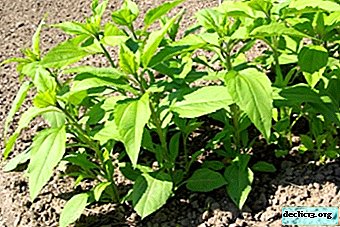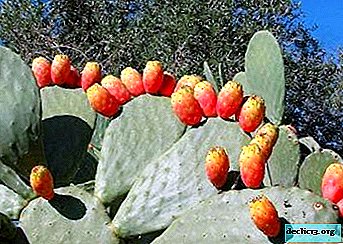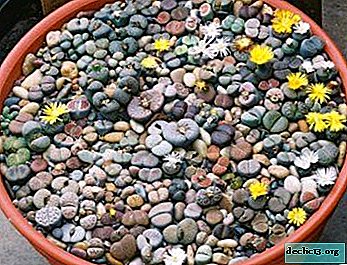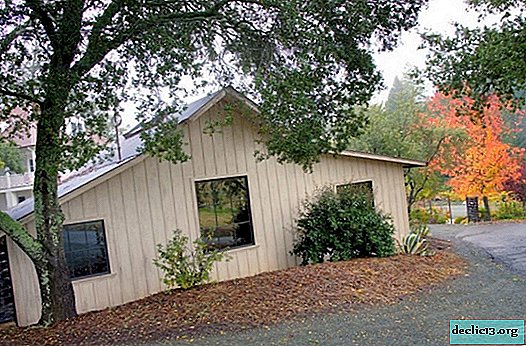Recommendations when it is better to transplant azalea and how to do it

Azalea is a rather complicated plant. She is beautiful, but very moody. In order to contain azalea or, as it is also called, rhododendron, at home, you need to be patient.
She needs to create not only comfortable conditions, but also take into account the features of the content. In addition, a lot of theoretical and practical knowledge will be required.
In the article we will understand when the azalea needs to be transplanted, whether it can be done during flowering, what is the algorithm of actions.
Features of azalea transplant
The plant should be replanted after the first flowering. Do this in order to see the condition of the roots and change the earth. At a subsequent stage, it is advisable to transplant the azalea once a year. This applies to young specimens. Older plants can be replanted in three to four years.
Before transplanting, you need to cut off dried shoots, peduncles, extra branches that have already dried up. Particular attention should be removed to the roots. In order not to damage them during transplantation, you need to be extremely careful. In this case, it is advisable to keep as much soil on the roots as possible in order to avoid damage. If the plant is transplanted correctly, then in the future it will delight with abundant and magnificent flowering.
Important! Azalea has a very delicate root system, which has its own microflora. If the root is damaged, the plant will die.Transplanting azalea is necessary only in the most extreme case. The plant does not like this procedure. The reason may be a poor soil condition (decay), as well as an overgrowth of the root system if the pot becomes too small. It is advisable not to transplant a flower after purchase for as long as possible. He needs adaptation.
What is the best time to do this?
 Under no circumstances should azaleas be transplanted in winter, as this is a period of rest, all processes are slowed down, the buds are laying and the plants are in a dormant state.
Under no circumstances should azaleas be transplanted in winter, as this is a period of rest, all processes are slowed down, the buds are laying and the plants are in a dormant state.
If the flower is replanted in winter, then this will most likely affect flowering. It will either not come at all, or it will be weak and meager. Winter azalea transplant is a great stress and risk.
To the question, in spring or autumn it is better to transplant azalea to another place, can this be done, for example, in October? the most favorable period for transplanting is spring. Namely - the end of flowering. Only after the plant fades can it be transplanted.
A transplant during flowering and budding is highly undesirable. This is usually the end of June - the beginning of August. Transplanting azalea during flowering or laying buds is possible only as a last resort.
During flowering, plants spend a lot of energy and vitality. If the azalea is transplanted during this period, then for her it will be a double burden. This threatens with the discharge of flowers and diseases, and sometimes death.
If the plant still needs to be transplanted, before this the flowers and peduncles should be pruned. Also, dry shoots and leaves should be cut in order to minimize the load.
Procedure
Before transplanting the plant should be prepared:
- Cut flower stalks, dry twigs, faded flowers.
- Peel dried leaves.
- Put in a basin with a solution of "Kornevin" or "Zircon" in order to promote rooting.
- Completely clean the roots during transplantation is not required.
- The transplant pot should be 2-3 cm wider and as high as the previous one. Then place drainage in the pot. You can put pine bark on top, then sprinkle the soil.
- A plant is placed in the center of the pot and is carefully covered with a substrate. In this case, you must try not to damage the roots. Then the remaining space should be covered with a substrate and carefully tamped.
- After transplanting, the flower is abundantly watered with water. After transplanting, the azalea is watered with an interval of 4 days and the flower is sprayed with Zircon or Epin. You should also protect azalea from drafts.
Read about how to transplant azalea at home.
Watch the video on the correct azalea transplant:
Follow-up care
 After transplanting, azalea should be abundantly watered. During this period, she needs to provide good lighting. But at the same time the light must be scattered. The place where the flower will be located should be warm and well-lit.
After transplanting, azalea should be abundantly watered. During this period, she needs to provide good lighting. But at the same time the light must be scattered. The place where the flower will be located should be warm and well-lit.
It should be remembered that the flower after transplantation is weakened. So, any load is contraindicated for him: direct sunlight, overfeeding, overflow.
If the plant is transplanted incorrectly, the technology is violated, then this will certainly affect its condition.
What is meant by improper transplant:
- Unsuitable period (flowering, budding, dormancy).
- Unsuitable land.
- Damage to the roots during transplantation.
- Deepening of the root of the neck during transplantation.
Violation of each item leads to negative consequences for the plant. It could be:
- Rotting of the roots.
- Diseases of the root cervix.
- Dumping leaves.
- Drying leaves.
- Lack of flowering.
If the plant is transplanted according to all the rules, then it will still feel bad for a while. The adaptation process is going on. If the technology has been disrupted, then this process will be difficult and painful. The same goes for the wrong transplant period.
Combating the consequences of an incorrect procedure
It all depends on what was done wrong and what the consequences were. Under the consequences, we can mean any deviation from the norm in the state of the plant. Consider several options:
- Incorrect transplant dates (during flowering, budding during dormancy). If for some reason the flower is transplanted at the wrong time and the consequences are manifested (there is no flowering, foxes are dumped, etc.), then the load on it should be minimized.
To do this, prune buds, flowers, peduncles (if any), dried leaves and branches. Then the flower is placed in a warm and bright place. At the same time, the feeding and watering regime remains standard. Must go through adaptation. If there are manifestations of any disease, then you need to observe the symptoms and take appropriate measures.
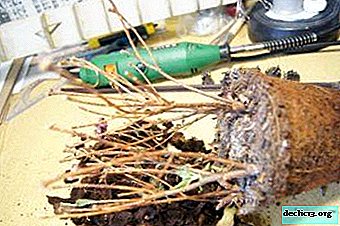 Damage to the root. If the roots were damaged, then perhaps the plant will not be able to save. But you can try. To do this, cut the cuttings for subsequent rooting. This is done in case of death of the plant. Cuttings can be rooted and get young azalea from them.
Damage to the root. If the roots were damaged, then perhaps the plant will not be able to save. But you can try. To do this, cut the cuttings for subsequent rooting. This is done in case of death of the plant. Cuttings can be rooted and get young azalea from them.In this case, the plant itself should be watered with heteroauxin. This fertilizer is intended to stimulate root growth. It belongs to organic fertilizers, has a high biological activity. Such an action will help save the root.
- Unsuitable land. This is fraught with a lack of nutrients. If the azalea is transplanted into ordinary soil from the garden, then most likely it will have to be replanted.
Important! Normal soil is completely unsuitable for azaleas.
- Deepening of the basal neck. This may cause it to rot. In most cases, the flower dies.
- Tick infection and infection. This can happen if you do not sanitize the instrument before transplanting. In order to rid a flower of a tick, it must be washed with a soapy sponge and rinsed under a warm shower. Then spray with Aktelika solution (a broad spectrum insecticidal solution). Dilute the solution in a proportion of 1 ml per liter of water.
- Fusarium wilting. Its cause is a fusarium mushroom. Usually it is brought during transplantation. The fungus can be in the soil, as well as on the instrument (if the instrument is not sterilized). The disease is characterized by wilting and drying of the leaves.
If such a wilt is found, it is necessary to treat as follows:
- Shed with "Fundazole."
- After a while, shed a solution of an antibiotic (any).
- After a while, a light pink solution of potassium permanganate. At the same time, quarantine must be kept in a bright and cool room.
- Trichodermin should be added to the ground to prevent the reappearance of the fungus.
So, we examined when and how to transplant azaleas, whether it can be done with a flowering plant. Azalea transplantation is a troublesome and skillful affair. You need to be prepared for the fact that there will be errors and they will have to be corrected. Be patient and get as much information as possible. After all, plants are quite unusual. Follow the rules for transplantation and care. And then your flower will always be healthy, blooming and magnificent.

 Damage to the root. If the roots were damaged, then perhaps the plant will not be able to save. But you can try. To do this, cut the cuttings for subsequent rooting. This is done in case of death of the plant. Cuttings can be rooted and get young azalea from them.
Damage to the root. If the roots were damaged, then perhaps the plant will not be able to save. But you can try. To do this, cut the cuttings for subsequent rooting. This is done in case of death of the plant. Cuttings can be rooted and get young azalea from them.